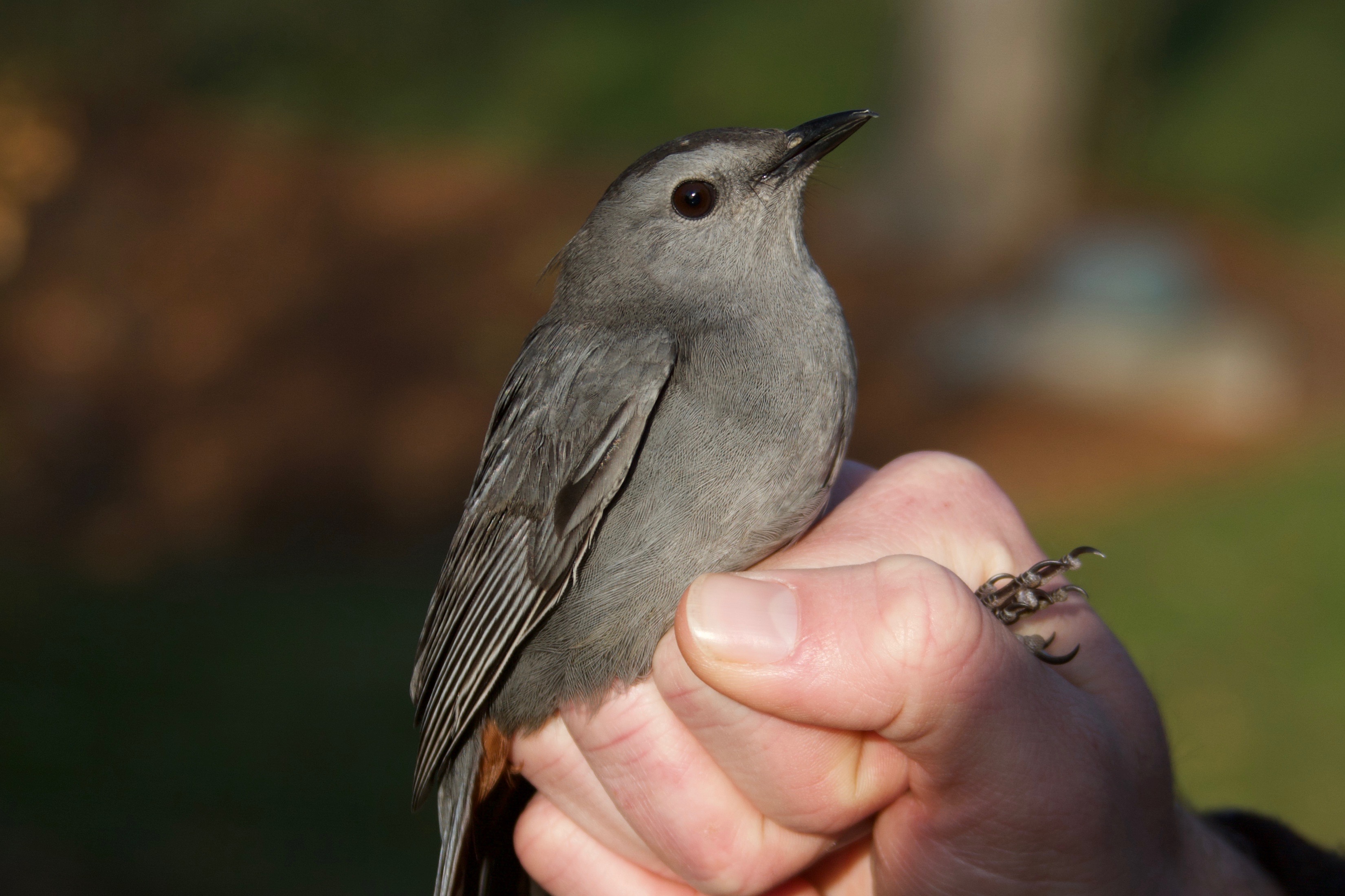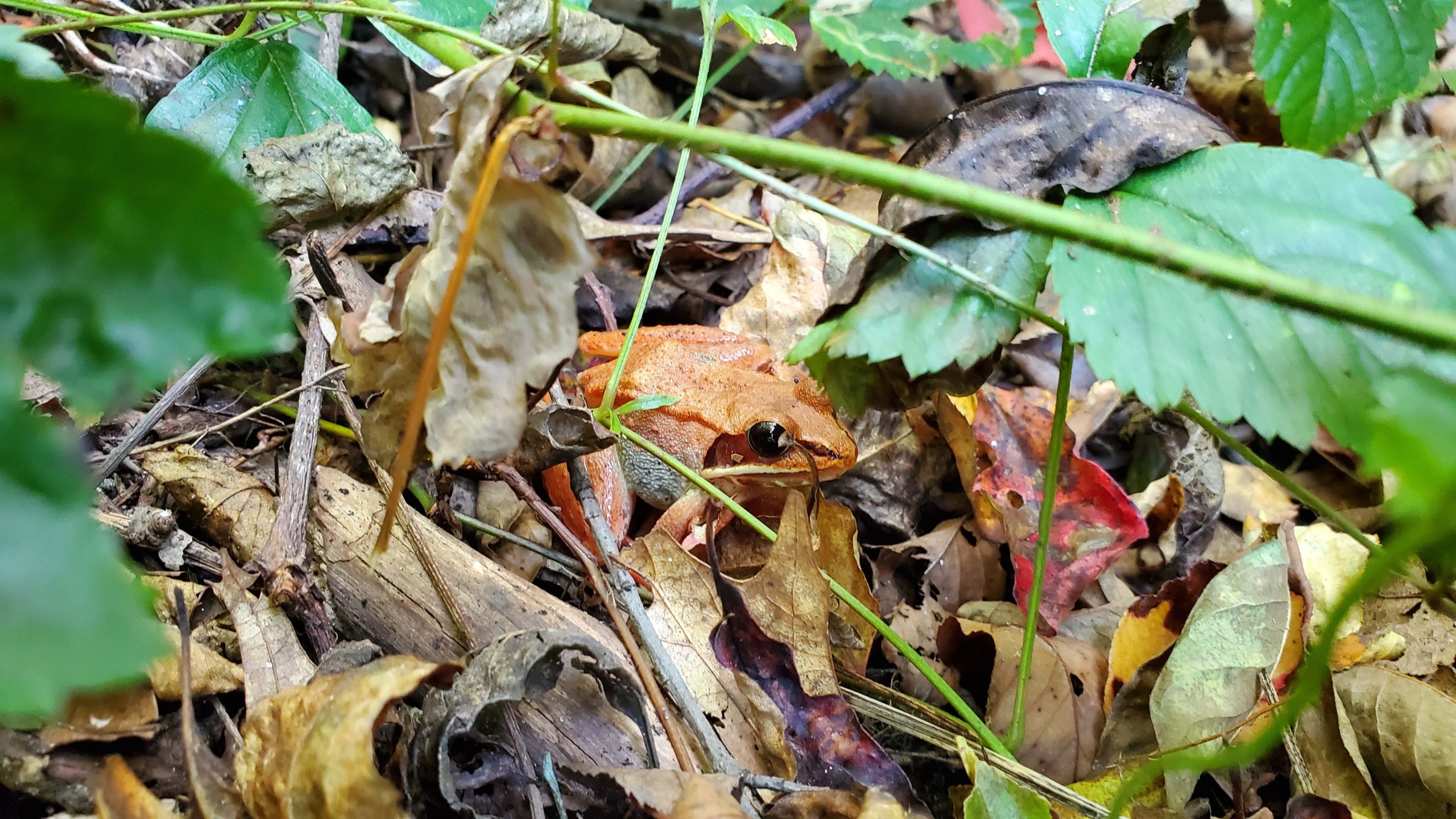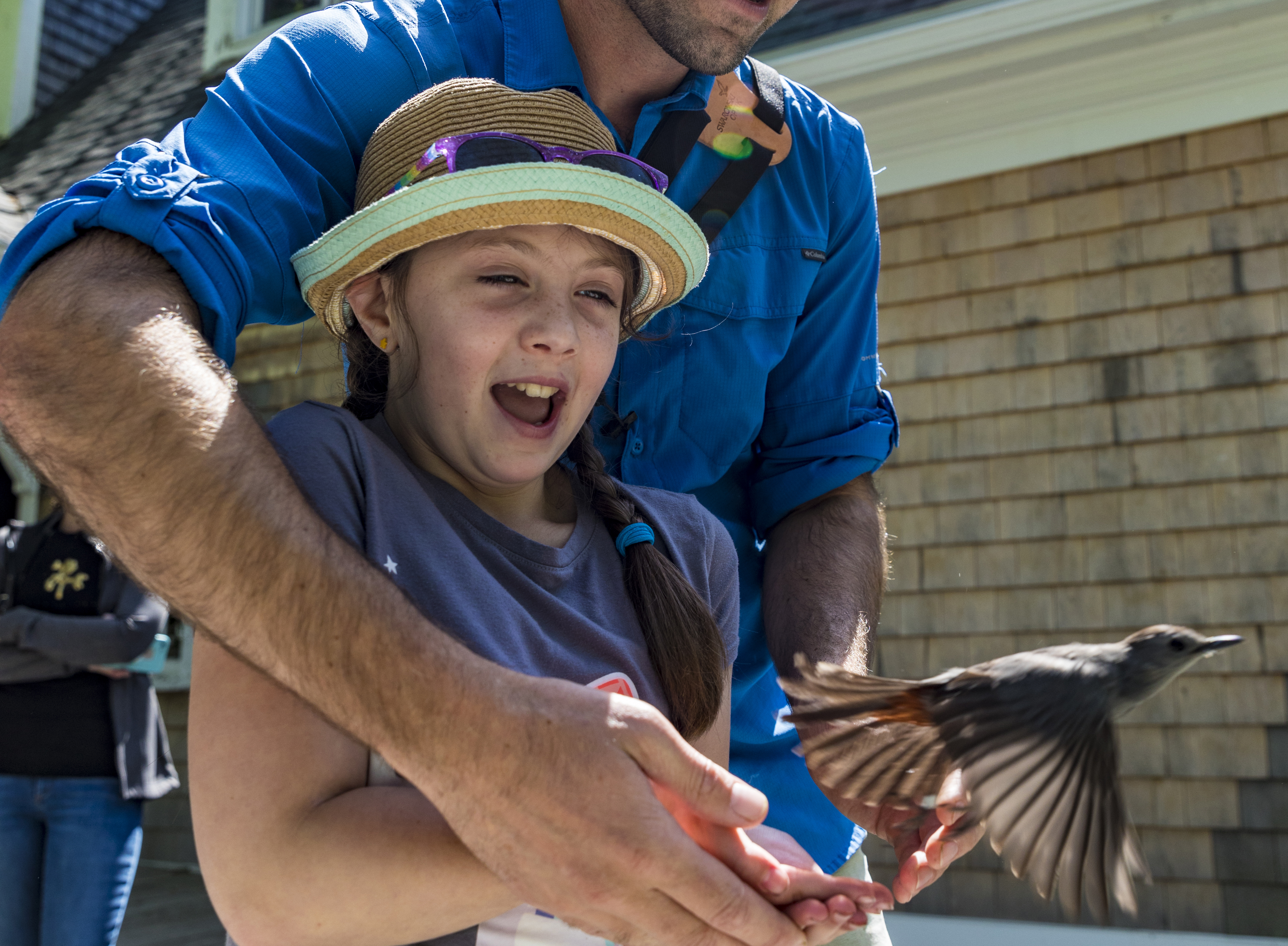Fall colors have started to spread along the net lanes. Virginia Creeper and Poison Ivy vines have turned a brilliant shade of red, while the maple tree that changed color last week dropped all its leaves by the end of this week, covering the path in orange and yellow leaves. The drought in our area has been upgraded to severe, no doubt causing the trees some stress and accelerating leaf change and loss. We’ve seen very few frogs and salamanders this fall; this is in stark contrast to last fall when we would find several Gray Tree Frogs and Spring Peepers each day. We finished the week with 182 new birds banded, 112 recaptures processed, and seven new species. This brings our season total up to 641 new birds banded, 423 recaptures processed, and 54 total species.
Right before our first net run Monday, the crows startled us by suddenly calling and taking flight over Manomet Headquarters. We saw a small falcon diving among them—a Merlin was giving chasing the crows! In all the commotion, a Cooper’s Hawk flushed from below the bluff and flew away, perhaps not wanting to get involved in the ruckus.

Small flocks of kinglets and Brown Creepers were foraging around Manomet throughout the day on Monday. Their high pitched calls hinted that a flock was nearby. Brown Creepers forage by spiraling their way up tree trunks using their long, stiff tail feathers for support and long hind claws to allow them to hang upside down from branches. Megan spotted one in the garden and Cynthia came over to watch, as well, as the bird climbed up the tree trunk and limbs then flew to the base to start foraging for spiders and insects again. We caught two new species for the week on Monday; a Brown Creeper, giving us excellent looks at its adaptations for adeptly climbing trees, and a Blackburnian Warbler.
Tuesday was too windy for us to band. Although Hurricane Teddy passed far to our east, we felt the effects at Manomet. Strong winds persisted throughout the day. There is usually a handful of exposed rocks off the bluff at high tide that the Double-crested and Great Cormorants will perch on to dry their wings. During the storm, though, even these rocks were submerged and waves regularly crashed over them. The cormorants gathered together and floated offshore, waiting for the tide to drop. As the rocks became exposed, the cormorants took up their posts again, with some disgruntled sounds as the rocks grew more crowded.





 Back to all
Back to all


